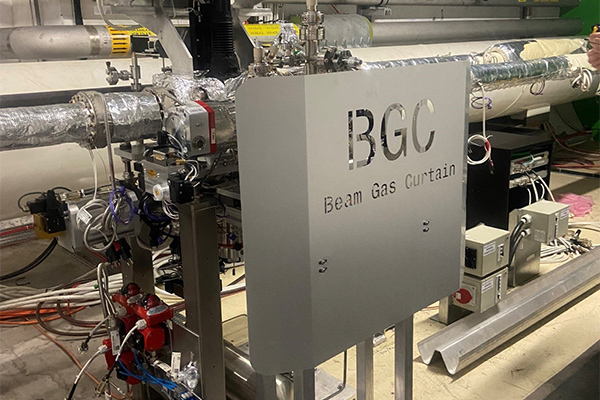Beam gas curtain monitor: Vacuum studies for LHC integration and operation

A new paper has been published with the continuation of the work on the Beam Gas Curtain monitor and its development towards installation on the Large Hadron Collider at CERN. The Beam Gas Curtain monitor is a key project spearheaded by the QUASAR group in the University of Liverpool, in collaboration with members of GSI and CERN. This monitor has been ongoing development over the past 10 years and is now reaching its most exciting stage yet, being installed on the LHC.
As part of the developments of the Beam Gas Curtain monitor for the LHC, a series of vacuum studies have been performed in order to ensure a successful integration and maintain LHC ultrahigh vacuum conditions. The paper Beam Gas Curtain monitor: Vacuum studies for LHC integration and Operation, written by C. Castro Sequerio, highlights the work undergone in order to safely install the monitor on the LHC beamline. It includes a laboratory test campaign to assess vacuum behaviour of the system to validate simulations that observe the effects of H20 outgassing from the initial vacuum pump down, and its immediate effect on the LHC and the chemical NEG coating within the beamline.
Once a vacuum is achieved, the Beam Gas Curtain uses neon gas which is not pumped by NEG due to being an unreactive noble gas, but can spread further in the beampipe up to cryopump modules which can cause a sticking effect on the gas molecules. The pumping effects and cryogenic surface deposition of neon gas that is unpumped from the Beam Gas Curtain is also considered, as well as overall distributed gas loads along the beampipe. Finally, the overall saturation lifetime of NEG coating is considered with regards to using nitrogen (which is pumped by NEG) as a working gas jet, as it can provide an improved beam profile signal compared to neon.
This work creates a full picture of how the LHC vacuum may be affected by the Beam Gas Curtain, whilst still reaching the required ultra-high vacuum conditions needed. This is a key publication as without this work, the installation of the Beam Gas Curtain on the LHC and subsequent new physics measurements of the LHC beam using beam-gas fluorescence interactions could not happen.